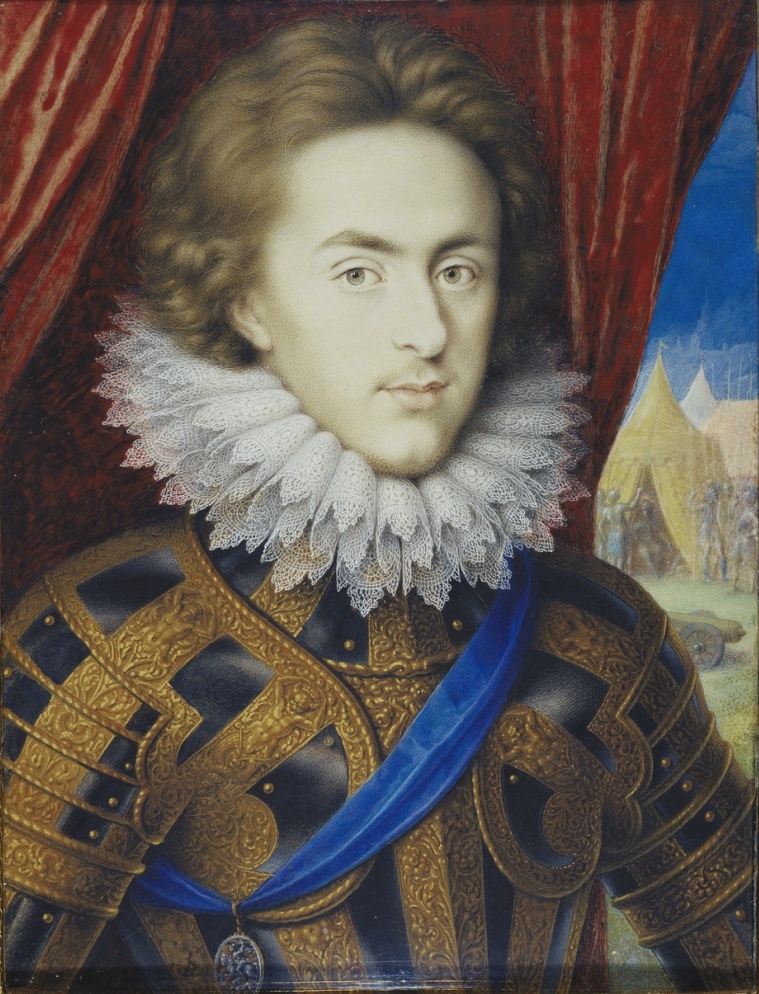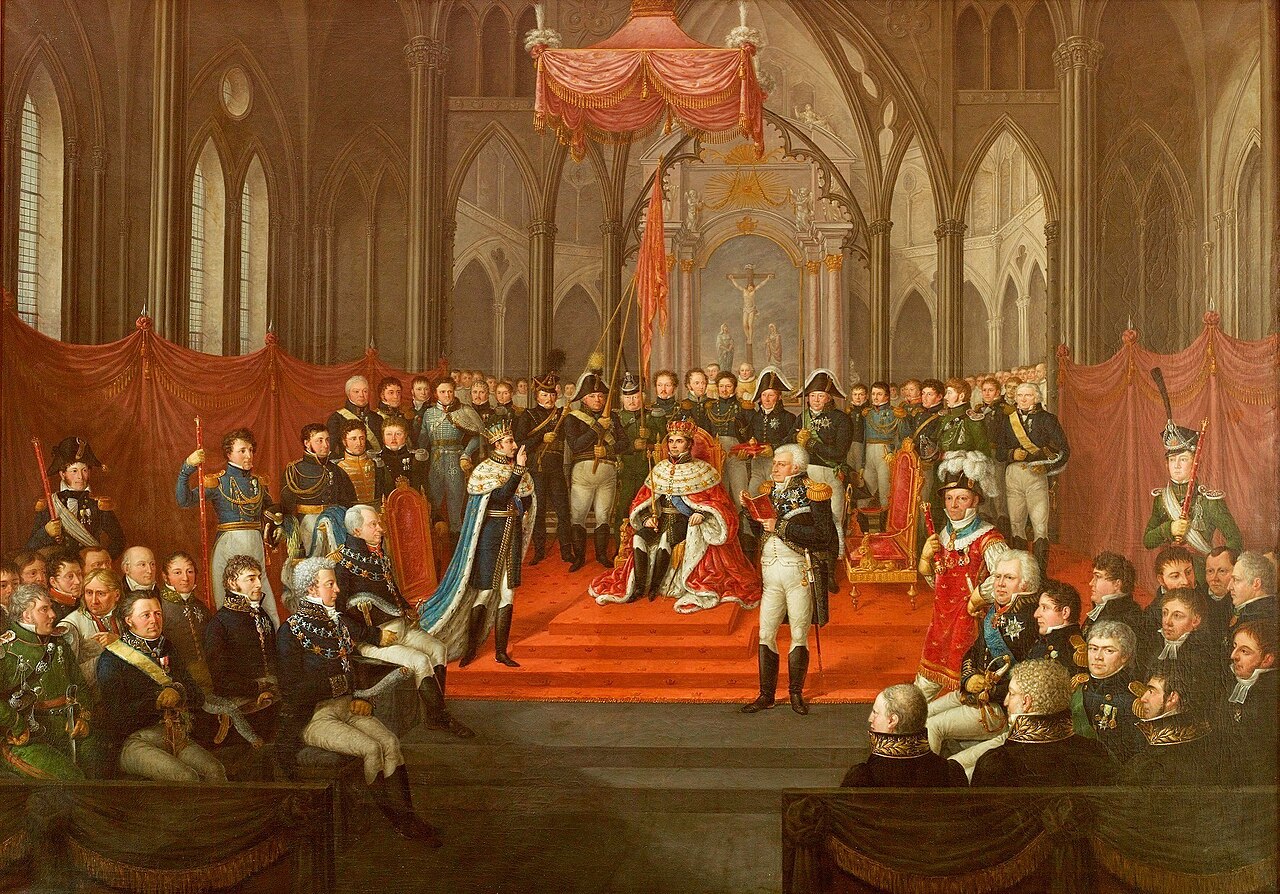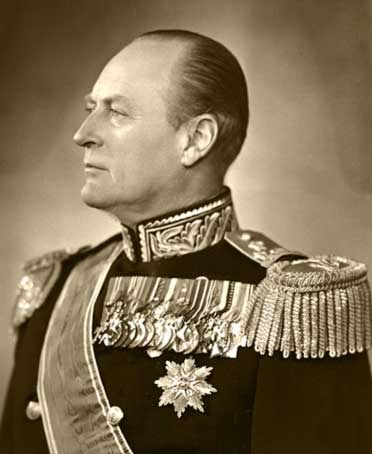© Unofficial Royalty 2024

Henry Frederick, Prince of Wales; Credit – Wikipedia
November 6, 1479 – Birth of Juana I, Queen of Castile and León and Queen of Aragon in Toledo, Kingdom of Castile, now in Spain
Juana was the daughter of Ferdinand II, King of Aragon and Isabella I, Queen of Castile and León, and the elder sister of Catherine of Aragon, the first wife of King Henry VIII of England. She married Philip of Austria, often called Philip of Habsburg or Philip the Handsome. He was the heir of Mary, Duchess of Burgundy in her own right, the ruler of a collection of states known as the Burgundian State, and Maximilian I, Holy Roman Emperor. Juana was declared insane and confined in the Royal Convent of Santa Clara in Tordesillas under the orders of her father, who ruled as regent until he died in 1516 when she inherited his kingdom as well. From 1516, when her son Charles I ruled as king, she was nominally co-monarch but remained confined until her death. Joanna’s death resulted in the personal union of Spain and the Holy Roman Empire, as her son Charles V, Holy Roman Emperor, also became King of Castile and Aragon. Most historians now agree Juana was clinically depressed and not insane as commonly believed.
Unofficial Royalty: Juana I, Queen of Castile and León and Queen of Aragon
November 6, 1550 – Birth of Karin Månsdotter, Queen of Sweden, wife of King Eric XIV of Sweden, in Stockholm, Sweden
Karin Månsdotter was one of several mistresses of Erik XIV, King of Sweden, and then briefly his Queen Consort. Erik first met Karin at an inn where she was a serving girl. Erik brought Karin into the palace where she worked as a chambermaid for Erik IV’s half-sister. Erik suffered from occasional bouts of mental illness and those closest to him noted that Karin had a calming effect on him. Erik and Karin had four children. The first two were born before the second official marriage in 1568 but were later legitimized. The last two died in early childhood. In 1567, Erik and Karin were married morganatically in a secret ceremony. In 1568, Karin was ennobled and a second official wedding was held in Storkyrkan (Great Church) in Stockholm, Sweden, followed the next day by Karin’s coronation as Queen of Sweden. Due to Erik’s behavior and his marriage to Karin, his younger half-brothers led a revolt against him that ended in his removal as King of Sweden in 1568. Erik was imprisoned as was Karin for a while. After Erik’s death, probably a murder from arsenic poisoning, Karin was granted an estate in Kangasala, Finland by Erik’s half-brother King Johan III where she lived comfortably for the rest of her life.
Unofficial Royalty: Karin Månsdotter, Queen of Sweden
November 6, 1612 – Death of Henry Frederick, Prince of Wales at St. James’ Palace in London, England, son of King James I of England; buried at Westminster Abbey in London, England
The heir to the thrones of England and Scotland, by the time he was 18 years old, Henry was physically mature, well-educated, an independent thinker, and ready to assume some government responsibility. He was on his way to making an excellent and popular king. Henry died of typhoid fever at age 18. His brother Charles (later King Charles I) became heir to the throne. Henry’s death was considered a national tragedy. In October 1612, Henry developed several symptoms including a fast pulse, a fever, a red face, a swollen stomach, gastrointestinal symptoms, and severe thirst. Later he developed delirium and violent convulsive movements. His doctors suspected poisoning but with modern medical knowledge, it is now suspected that Henry died from typhoid fever. Henry’s death caused immense grief across England and Scotland and in his family. King James I was too distraught to attend the funeral. Months later, in the middle of a meeting, he broke down, crying, “Henry is dead, Henry is dead.” His mother Queen Anne could not bear to have Henry’s death mentioned and people were advised not to give her condolences. Henry’s brother, the future King Charles I, who was now the heir to the throne, felt the loss deeply and insisted until the end of his life that Henry had been poisoned. We can only wonder how different English history might have been if Henry Frederick had been King instead of his brother King Charles I.
Unofficial Royalty: Henry Frederick, Prince of Wales
November 6, 1650 – Death of Willem II, Prince of Orange from smallpox at The Hague, Dutch Republic, now in the Netherlands; buried in the Royal Vault of the Nieuwe Kerk in Delft, the Netherlands
In 1641, at the Chapel Royal of the Palace of Whitehall in London, England, 15-year-old Willem married nine-year-old Mary, Princess Royal, the daughter of King Charles I of England. Because of Mary’s young age, the marriage was not consummated for several years. In 1650, Mary was pregnant with her first child when her husband Willem II fell ill with smallpox. He died on November 6, 1650, at the age of 24. Eight days later, Mary gave birth to her only child Willem III, Prince of Orange who married his first cousin Mary, the eldest surviving child of the future King James II of England. Following the Glorious Revolution of 1688 in which James II was deposed, they jointly reigned as King William III and Queen Mary II. At later dates, King William III’s mother Mary, Princess Royal, and his wife Queen Mary II of England also died from smallpox.
Unofficial Royalty: Willem II, Prince of Orange
November 6, 1656 – Death of King João IV of Portugal at Ribeira Palace in Lisbon, Portugal; buried at the Monastery of São Vicente de Fora in Lisbon, Portugal
João IV was the first King of Portugal from the Portuguese House of Braganza. The Braganzas came to power after deposing the Spanish Habsburg Philippine dynasty, which had reigned in Portugal since 1580. In 1633, João married Luisa de Guzmán. They had seven children including two kings of Portugal and Catherine of Braganza, the wife of King Charles II of England. In 1646, João IV placed the crown of Portugal on the head of a statue of Our Lady of the Immaculate Conception and proclaimed the Virgin Mary to be the queen, the patron saint, and the protector of Portugal. After this, no Portuguese monarch would ever wear the crown. Instead, the crown was always placed on a cushion next to the monarch. João IV, King of Portugal died on November 6, 1656, aged 52, at Ribeira Palace in Lisbon, Portugal.
Unofficial Royalty: King João IV of Portugal
November 6, 1661 – Birth of King Carlos II of Spain at the Royal Alcazar in Madrid, Spain
Carlos II was the last Spanish king from the House of Habsburg. He had physical and mental conditions probably caused by the continued inbreeding of the House of Habsburg. Carlos was a weak, sick child from birth. He did not learn to talk until he was four years old and could not walk until he was eight years old. Like many of the Habsburg family, Carlos had the Habsburg jaw (mandibular prognathism), a disfiguring genetic disorder in which the lower jaw outgrows the upper jaw. When Carlos died without children, the Spanish House of Habsburg became extinct. Carlos II was succeeded by his half-sister’s grandson Philippe of France, Duke of Anjou who reigned as Felipe V, King of Spain, the first monarch of the House of Bourbon which still reigns in the Kingdom of Spain today.
Unofficial Royalty: King Carlos II of Spain
November 6, 1754 – Birth of King Friedrich I of Württemberg at Treptow Palace in Treptow an der Rega, Pomerania, now Trzebiatów, Poland
Full name: Friedrich Wilhelm Karl
Friedrich first had a very unsuccessful marriage to Augusta of Brunswick-Wolfenbüttel. She was the daughter of Carl Wilhelm Ferdinand, Duke of Brunswick-Wolfenbüttel, and Princess Augusta of Great Britain (sister of King George III of the United Kingdom). Her younger sister Caroline later married the future King George IV of the United Kingdom and also had a very unsuccessful marriage. Friedrich and Augusta had four children. In 1797, Friedrich married again to Charlotte, Princess Royal, the eldest daughter of King George III of the United Kingdom. They had one stillborn daughter born in 1798. Upon his father’s death in December 1797, Friedrich became Duke of Württemberg. When the Holy Roman Empire was reorganized following France’s annexation of the west bank of the Rhine, Württemberg was raised to an Electorate and Friedrich became Elector in 1803. In exchange for providing France with a large armed force, Napoleon allowed Friedrich to raise Württemberg to a kingdom in 1805.
Unofficial Royalty: King Friedrich I of Württemberg
November 6, 1796 – Birth of Leopold II, Prince of Lippe in Detmold, Principality of Lippe, now in North Rhine-Westphalia, Germany
When Leopold II was just five years old, his father Leopold I, Prince of Lippe died at the age of 34. Leopold II’s mother Pauline of Anhalt-Bernburg very capably acted as Regent of the Principality of Lippe until 1820. In 1820, Leopold II married Princess Emilie of Schwarzburg-Sondershausen. They had nine children including three reigning Princes of Lippe. Leopold, shy by nature, lived a restrained life. He had two passions: hunting and the theater. The Lippe Princely Court Theater (Hochfürstliches Lippisches Hoftheater) he established in Detmold was among the best in the German monarchies. The theater established by Leopold II is still in existence today. Now called the Landestheater Detmold, it is a theater for operas, operettas, musicals, ballets, and stage plays in Detmold, North Rhine-Westphalia, Germany.
Unofficial Royalty: Leopold II, Prince of Lippe
November 6, 1816 – Death of Carl II, Grand Duke of Mecklenburg-Strelitz in Neustrelitz, Grand Duchy of Mecklenburg-Strelitz, now in Mecklenburg-Vorpommern, Germany; buried at the New Crypt of the Johanniterkirche in Mirow, Grand Duchy of Mecklenburg-Strelitz, now in Mecklenburg-Vorpommern, Germany
Carl was the brother of Charlotte of Mecklenburg-Strelitz, the wife of King George III of the United Kingdom. Carl married two sisters Princess Friederike and Princess Charlotte of Hesse-Darmstadt. Friederike died in childbirth delivering her tenth child and Charlotte died in childbirth giving birth to her only child. After the death of his childless brother in 1794, Carl succeeded him as Duke of Mecklenburg-Strelitz. In 1815, at the Congress of Vienna, the Duchy of Mecklenburg-Strelitz was raised to a Grand Duchy. In the summer of 1816, while Carl was throughout the German monarchies and visiting to visit family, he developed an inflammation of the lungs. Despite appearing to recover, he fell ill again that autumn and died at the age of 75.
Unofficial Royalty: Carl II, Grand Duke of Mecklenburg-Strelitz
November 6, 1817 – Death of Princess Charlotte of Wales, the only child of The Prince of Wales (later King George IV), in childbirth after delivering a stillborn son, at Claremont House in Esher, Surrey, England; buried at St. George’s Chapel at Windsor Castle in Windsor, England
Charlotte was the only child of George, Prince of Wales (the future King George IV). She married Prince Leopold of Saxe-Coburg-Saafeld, the future uncle of Queen Victoria and Prince Albert and the future king of Belgium. Had Charlotte lived, she would have succeeded her father as Queen, but on November 6, 1817, a great tragedy struck the British Royal Family. After a labor of over 50 hours, Charlotte delivered a stillborn son. Several hours later, twenty-one-year-old Princess Charlotte, King George III’s only legitimate grandchild, died of postpartum hemorrhage. Charlotte was mourned by the British people in a manner similar to the mourning of Diana, Princess of Wales. Charlotte’s pregnancy and delivery were grossly mismanaged and the doctor in charge, Sir Richard Croft, later died by suicide.
Unofficial Royalty: Death of Princess Charlotte of Wales in childbirth and its impact on the succession to the British throne
Unofficial Royalty: Princess Charlotte of Wales
November 6, 1836 – Death of former King Charles X of France at the palace of Count Michael Coronini von Cronberg in Gorizia, in present-day Italy; buried at the Church of Saint Mary of the Annunciation on Kostanjevica Hill in present-day Nova Gorica, Slovenia
King Charles X was the last King of France from the House of Bourbon. He was the third son of Louis, Dauphin of France, and the younger brother of the ill-fated King Louis XVI. When Napoleon was overthrown in 1814, the Bourbons were restored and Charles’ elder brother became King Louis XVIII. In 1824, King Louis XVIII died, and Charles succeeded to the French throne as King Charles X. He would be very unpopular with the French people, and would not remain on the throne for very long. His actions led to the July Revolution of 1830, which led to his abdication. Charles lived in exile for the rest of his life. He died from cholera at the age of 79.
Unofficial Royalty: King Charles X of France
November 6, 1894 – Birth of Elisabeth Franziska von Bischoff-Korthaus, known as Ellen Bischoff-Korthaus, the wife of Adolf II, the last reigning Prince of Schaumburg-Lippe, in Munich, Kingdom of Bavaria, now in the German state of Bavaria
Ellen was an actress under the stage name Ellen Korth. Besides her stage work, she had roles in two silent films in 1918. In 1918, she married Prince Eberwyn of Bentheim and Steinfurt but the couple divorced in 1919. In 1920, Ellen married Adolf II, the last reigning Prince of Schaumburg-Lippe. Ellen and Adolf’s marriage was childless. After the end of the German Empire, Adolf was exiled from the Free State of Schaumburg-Lippe and he and Ellen lived mostly in the Brionian Islands, then Italy, now in Croatia. Ellen and Adolf died in an airplane crash in Zumpango, Mexico. Adolf and Ellen were killed along with eight other passengers from Germany, Austria, and Hungary, and four crew members. Their plane developed engine trouble and crashed between the volcanoes Popocatepetl and Ixtaccihuatl as they were flying from Mexico City, Mexico to Guatemala City, Guatemala.
Unofficial Royalty: Ellen Bischoff-Korthaus, Princess of Schaumburg-Lippe
November 6, 1896 – Birth of Philipp, Landgrave of Hesse, Head of the Electoral House of Hesse-Kassel and Head of Grand Ducal House of Hesse and by Rhine, at Rumpenheim Castle in Offenbach, Germany
Philipp, Landgrave of Hesse became head of the Electoral House of Hesse (also known as Hesse-Kassel) in 1940. In 1968, upon the death of his childless distant cousin, Prince Ludwig of Hesse and by Rhine, Philipp inherited the headship of the former Grand Ducal House of Hesse and by Rhine. This reunited the last two remaining branches of the historic House of Hesse which had been divided in 1567.
Unofficial Royalty: Philipp, Landgrave of Hesse
November 6, 1929 – Death of Prince Maximilian of Baden, Margrave of Baden, pretender to the former throne of the Grand Duchy of Baden and the Head of the House of Zähringen from 1928 until his death, in Salem, Baden-Württemberg, Germany; buried in the Mimmenhausen Cemetery in Salem.
Full name: Maximilian Alexander Friedrich Wilhelm
Maximilian was heir to the throne of the Grand Duchy of Baden and served briefly as Chancellor of the German Empire. On August 9, 1928, the last reigning Grand Duke of Baden, Friedrich II, died, and Max became the pretender to the former throne and the Head of the House of Zähringen. At that time, he assumed the historic title of Margrave of Baden. Just over a year later, on November 6, 1929, he died of kidney failure following several strokes.
Unofficial Royalty: Prince Maximilian of Baden, Margrave of Baden
November 6, 1935 – Wedding of Prince Henry, Duke of Gloucester, son of King George V of the United Kingdom, and Lady Alice Montagu-Douglas-Scott at the Private Chapel, Buckingham Palace in London, England
Prince Henry, Duke of Gloucester and Lady Alice Montagu Douglas Scott were married on November 6, 1935, at the Private Chapel in Buckingham Palace in London, England. The wedding was originally set to be held at Westminster Abbey but the wedding venue was changed after the death of the bride’s father less than three weeks before the wedding date. Because of the circumstances, it was deemed more appropriate to have the wedding at the Private Chapel at Buckingham Palace.
Unofficial Royalty: Wedding of Prince Henry, Duke of Gloucester and Lady Alice Montagu Douglas Scott
This article is the intellectual property of Unofficial Royalty and is NOT TO BE COPIED, EDITED, OR POSTED IN ANY FORM ON ANOTHER WEBSITE under any circumstances. It is permissible to use a link that directs to Unofficial Royalty.
















